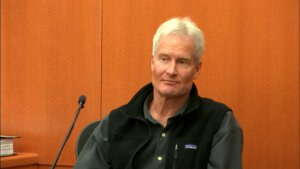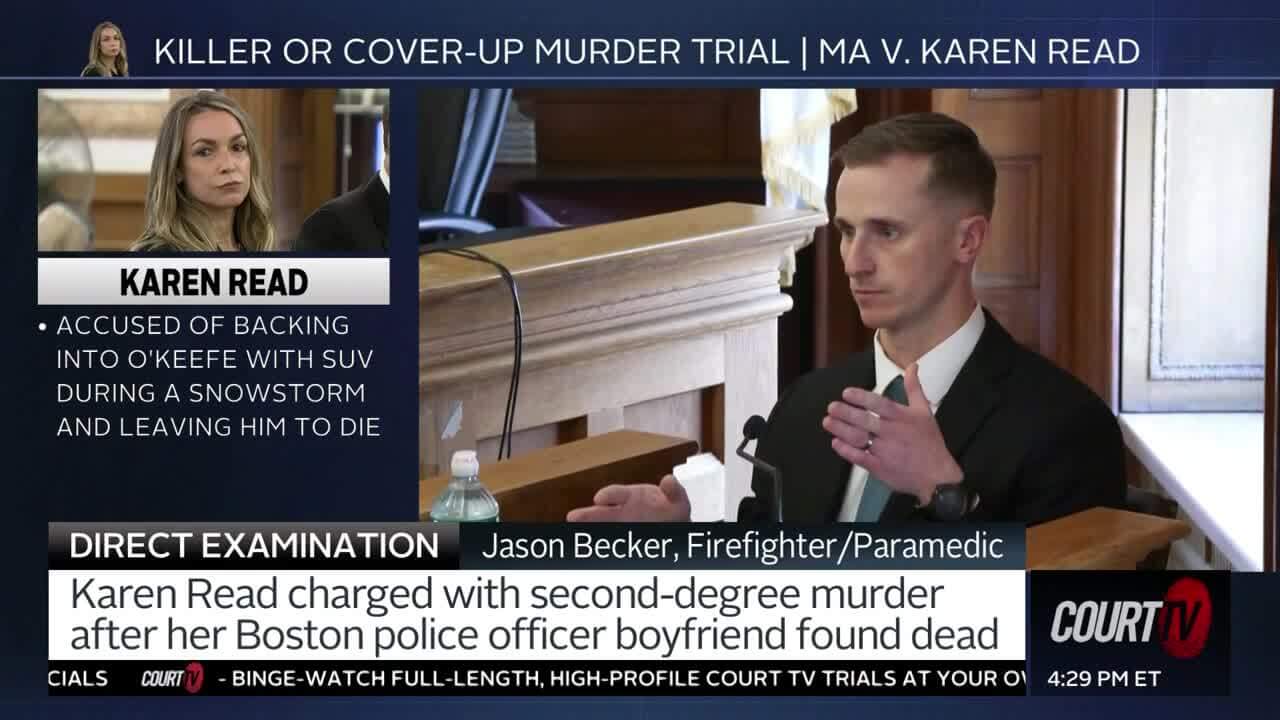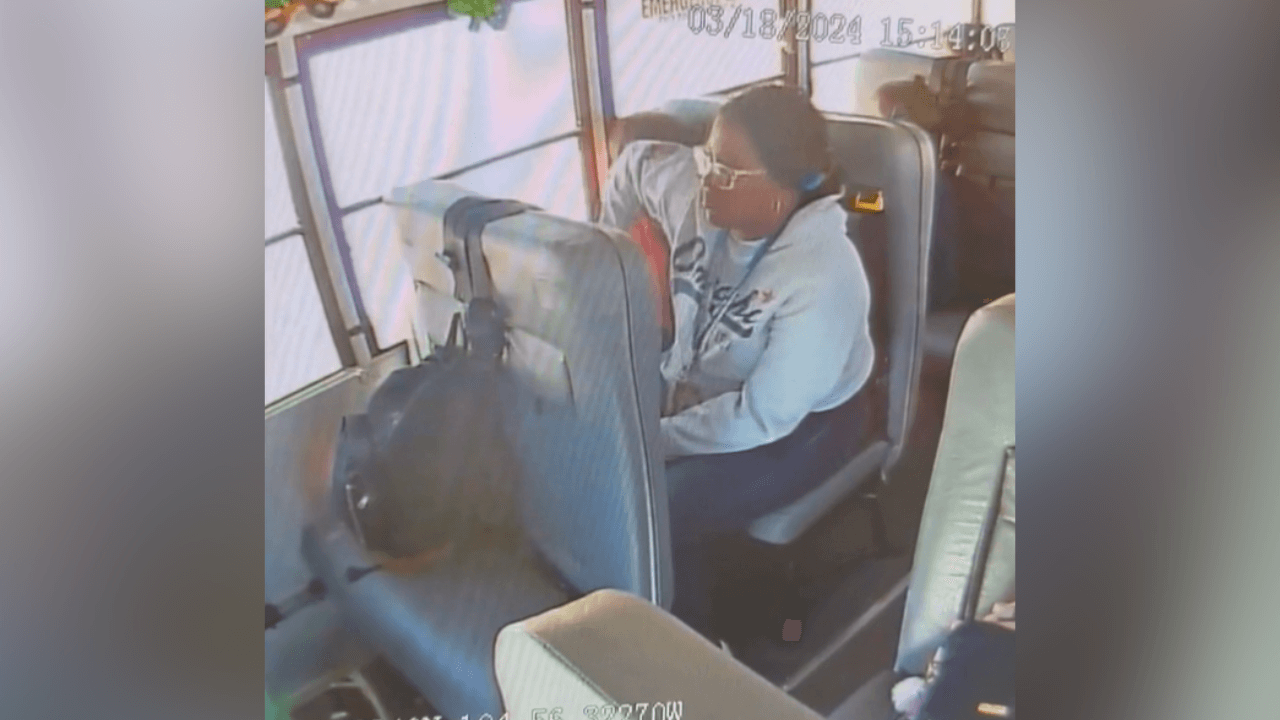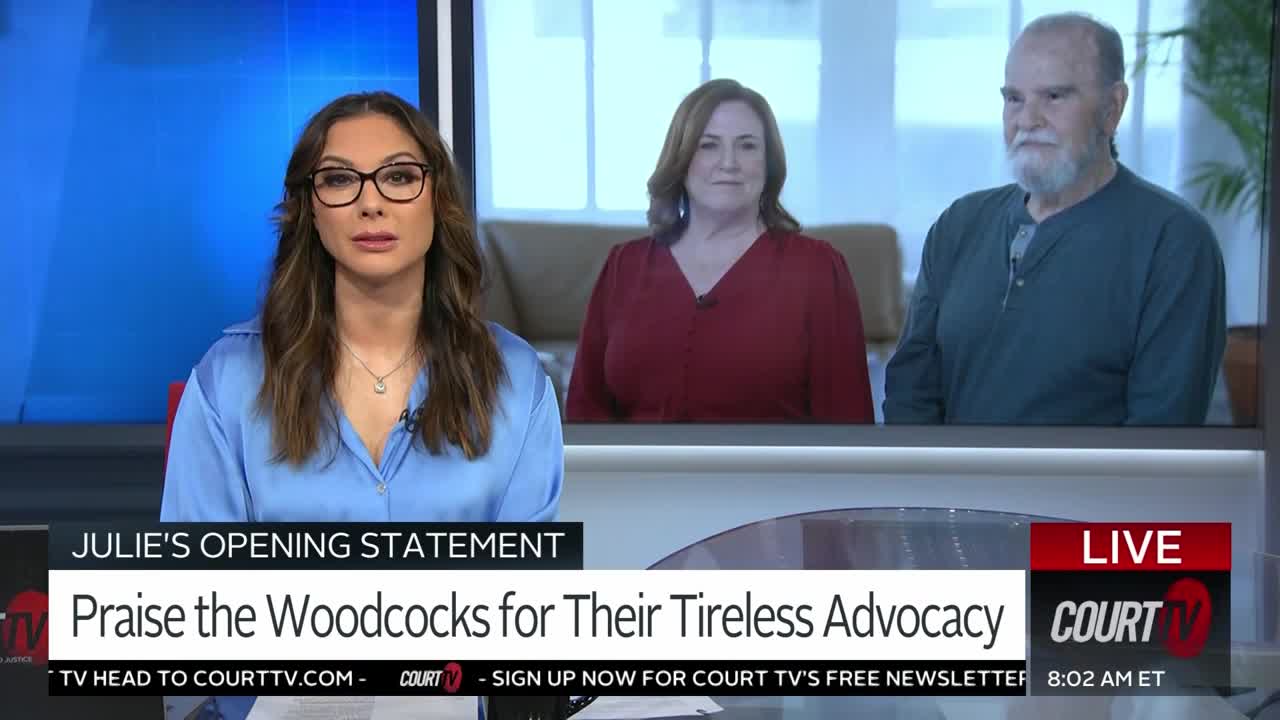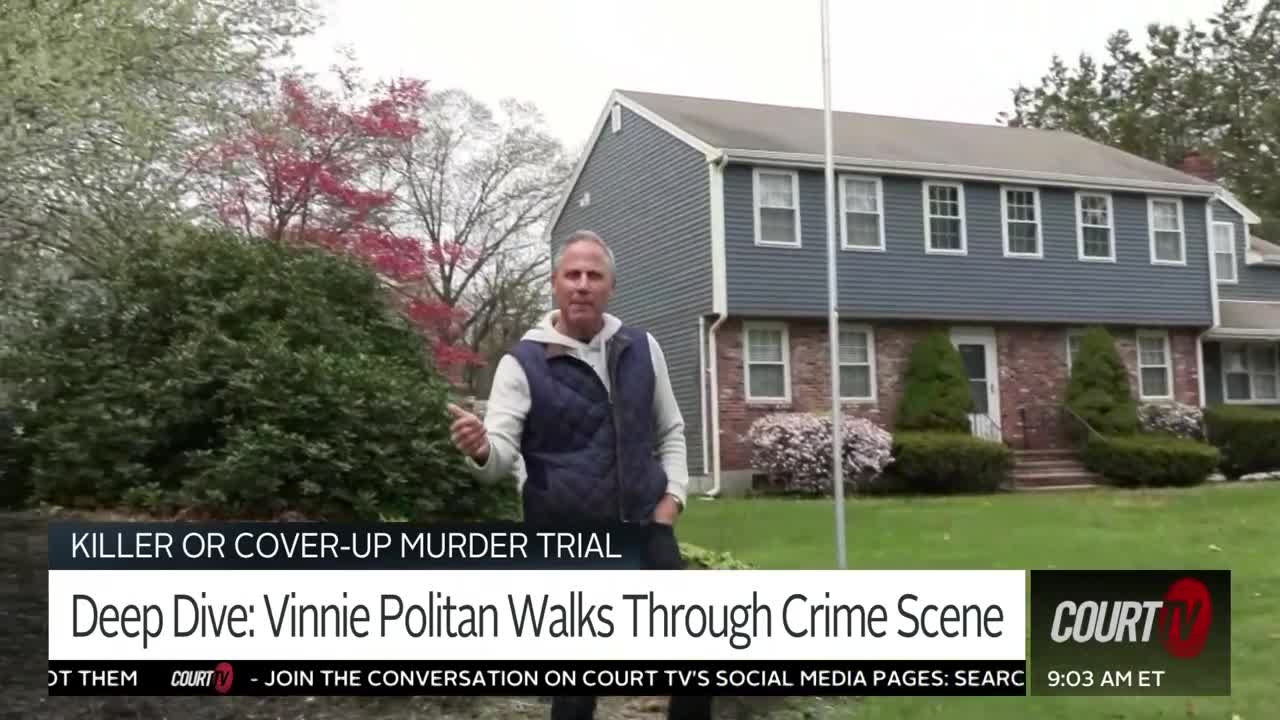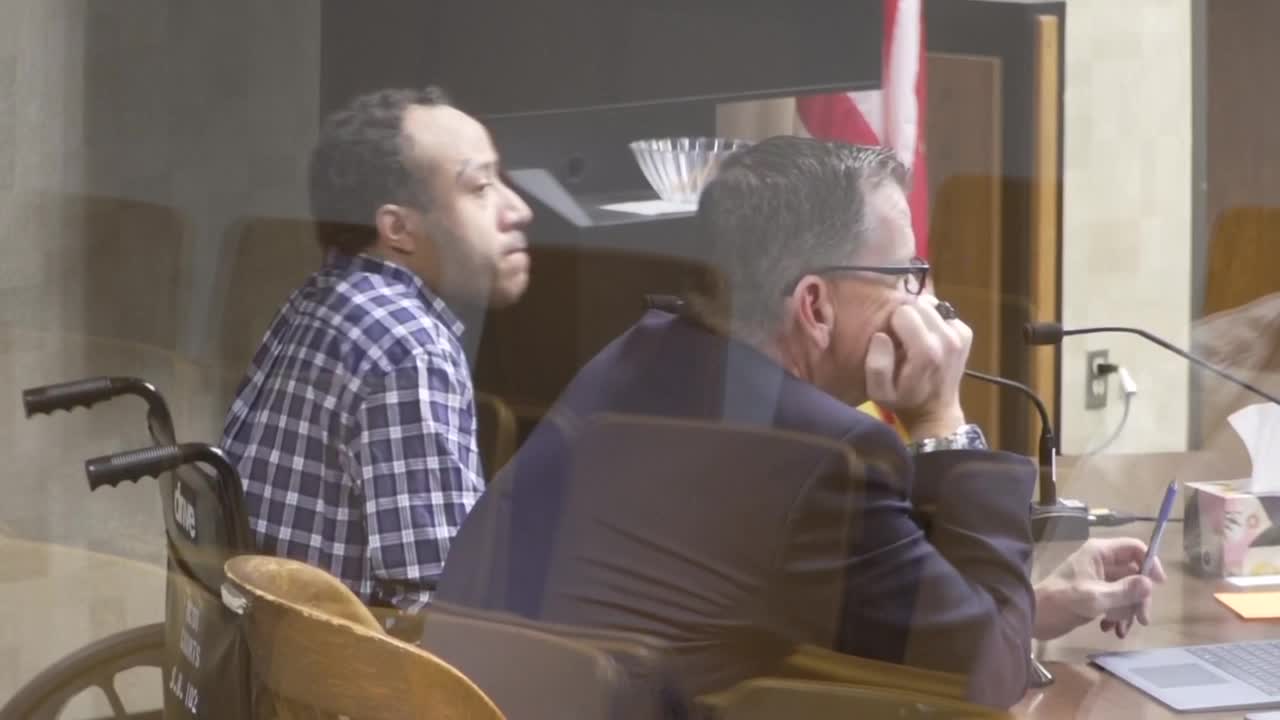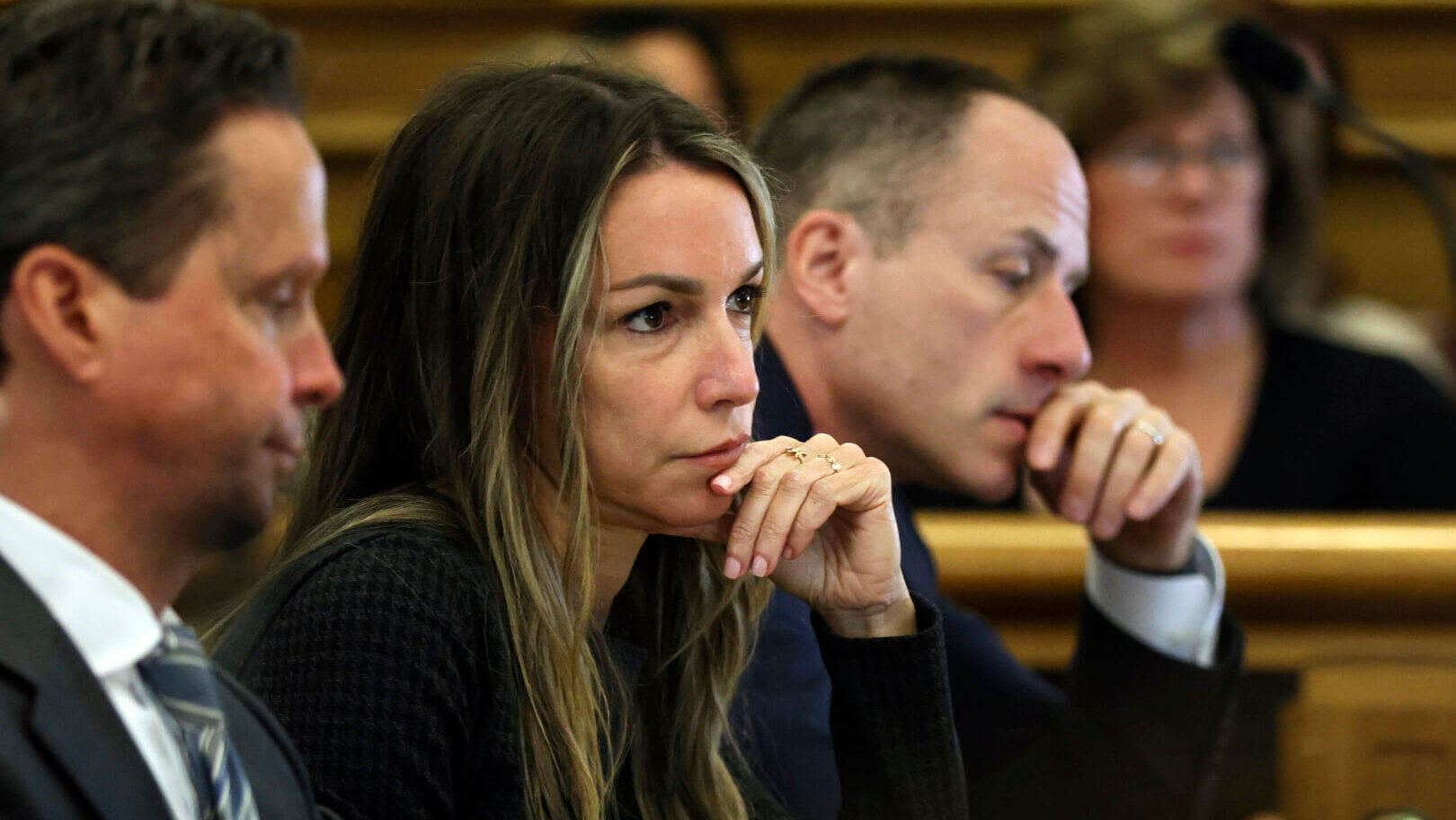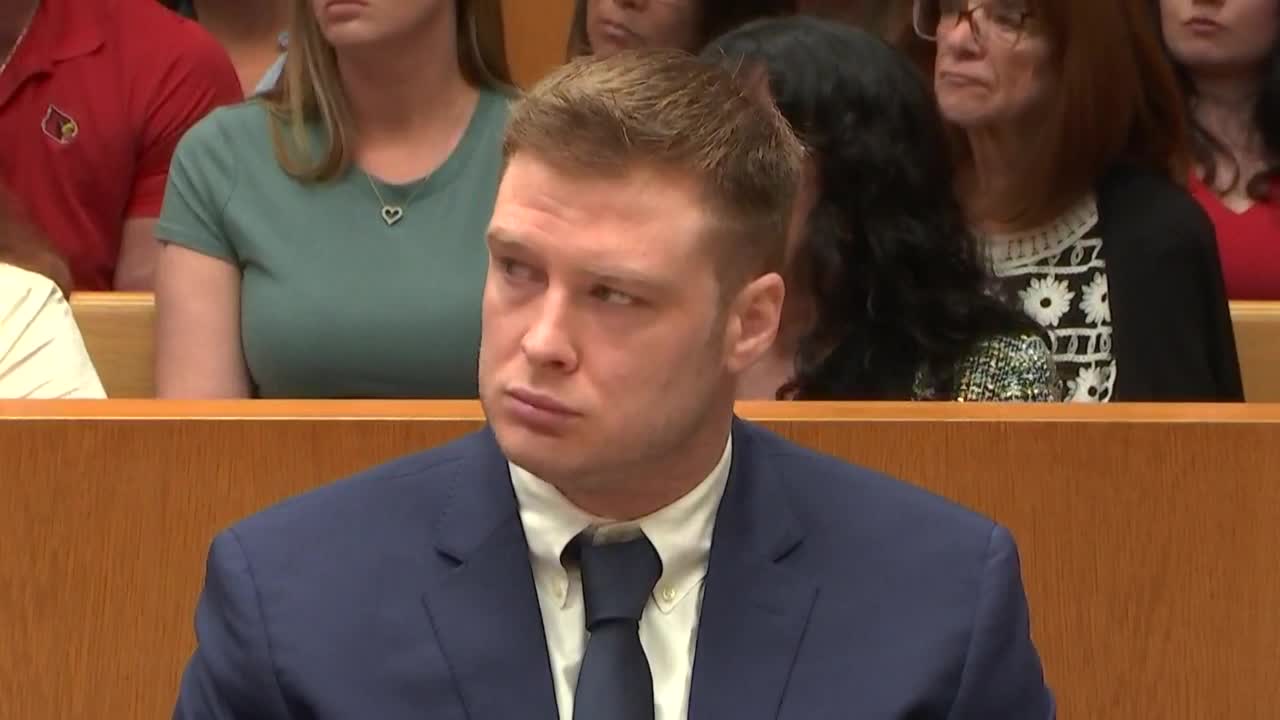PARK CITY, Utah (Court TV) — If you watched the verdict in the Gwyneth Paltrow Ski Crash Case, you can thank Court TV.
That’s because Court TV was in a unique position — literally and figuratively. The Court decorum order in this particular case restricted us from showing counsel tables during trial unless the attorneys were speaking.
Translation: No one would be allowed to see Paltrow’s reactions to the jury’s verdict – the way it’s regularly shown in Court TV’s other televised trials.
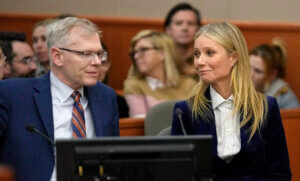
Gwyneth Paltrow and her attorney Steve Owens smile after the reading of the verdict in her lawsuit trial, Thursday, March 30, 2023, in Park City, Utah. Paltrow won her court battle over a 2016 ski collision at a posh Utah ski resort after a jury decided Thursday that the movie star wasn’t at fault for the crash. (AP Photo/Rick Bowmer, Pool)
Sanderson sued Paltrow, seeking more than $3.2 million in damages in connection with a collision on the slopes of Deer Valley in Park City, Utah. Sanderson claimed Paltrow skied recklessly, causing him permanent brain damage. Paltrow countersued for $1 plus costs and attorney fees, insisting Sanderson was the one who crashed into her. In the end, the jury decided on Thursday that Paltrow was not at fault.
WATCH: Gwyneth Paltrow Ski Crash Case: Watch the Verdict
Court TV made an informal request to the court’s public information officer to loosen the decorum rule for the verdict only, but that was rejected.
“The decision would mean that we would not be able to see the two most important people during the most important moment of this trial,” said Grace Wong, Senior Director of Courtroom Coverage. “We had to go the extra mile to persuade the judge to reconsider.”
At the last minute, Court TV’s lawyer with assistance from local counsel quickly assembled to get a motion before Judge Kent Holmberg Thursday morning, and His Honor held a formal hearing after closing arguments.
Jeff Hunt, an attorney who represents Court TV and other media outlets, formally petitioned the court to allow cameras to focus on both Gwyneth Paltrow and Terry Sanderson’s counsel tables during the reading of the verdict.
Hunt represented not only Court TV, but several other media outlets covering this case, such as the Associated Press, ABC News, CNN, and others. Hunt argued that in light of the case having attracted both national and international attention, camera access represents “a marvelous opportunity for the public to observe how the court reaches decisions, how cases are litigated, and we all benefit from that.”
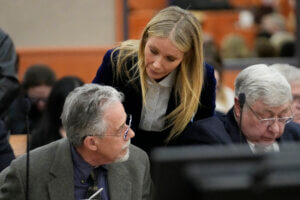
Gwyneth Paltrow speaks with retired optometrist Terry Sanderson, left, as she walks out of the courtroom following the reading of the verdict in their lawsuit trial, Thursday, March 30, 2023, in Park City, Utah. Paltrow won her court battle over a 2016 ski collision at a posh Utah ski resort after a jury decided Thursday that the movie star wasn’t at fault for the crash. (AP Photo/Rick Bowmer, Pool)
READ MORE: Gwyneth Paltrow Ski Crash Case Daily Updates
Hunt went on to suggest that not allowing electronic media coverage of counsel tables had breached the media’s First Amendment right.
“As the rule stands, the presumption is that there should be electronic media coverage of counsel’s table.”
Hunt noted that showing counsel tables would be neither harmful nor prejudicial. After some discussion about camera placement, the judge asked attorneys for both sides if they had any objections.
Sanderson’s attorney Robert Sykes said he and his client had no objection. Paltrow’s attorney Stephen Owens emphasized that the First Amendment is important to him and agreed that there is a public benefit to broadcasting trials.
Owens pointed out that it was his team’s belief that the decorum order had been violated three times over the course of the trial (by other media outlets) and cited a privacy concern, but conceded that if nothing would physically change in the courtroom, they would not object.
Judge Holmberg ultimately granted Court TV’s motion, so long as photographers didn’t use flashes or interfere with the jury.







